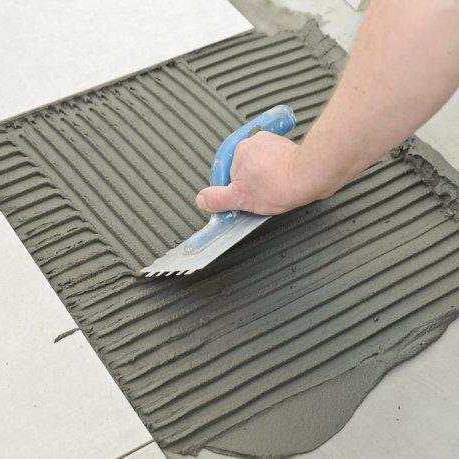
Oct . 20, 2025 14:55 Back to list
HPMC for Tile Adhesive: Strong Bond, No Sag, Longer Open?
What HPMC Really Does for Tile Adhesives (From the Factory Floor to the Jobsite)
If you’ve mixed more than a few bags of tile mortar, you already know: water retention and workability make or break a job. That’s where hpmc for tile adhesive earns its keep. I’ve sat in enough labs and jobsite demos to see crews switch brands based on how a trowel “feels.” Not very scientific, I know—yet performance data tends to back up those gut calls.

Industry snapshot—why the rush to better cellulose ethers?
Large-format porcelain, low-absorption tiles, hot climates, and tighter schedules are pushing demand for high-retention, anti-slip, extended-open-time formulas. In fact, many producers are upgrading to modified C2TE/S1 mortars and relying on hpmc for tile adhesive to balance water demand, sag resistance, and open time without killing early strength. Prices have been surprisingly stable this year, but customization is the battleground.
Product: TILE BONDING ADDITIVES (HPMC-based blend)
Origin: NO.1 BUILDING, TECHNOLOGY CERTER, HIGH-TECH ZONE, SHIJIAZHUANG CITY, HEBEI PROVINCE, CHINA. Product type: Mixture for exclusive usage (first released 2019-09-18). It’s a tuned pack built around high-purity HPMC grades for cementitious tile adhesives.
| Parameter | Spec (typical) ≈ |
|---|---|
| HPMC viscosity (2% Brookfield, mPa·s) | 40,000–90,000 |
| Moisture | ≤5% |
| Ash content | ≤5% |
| pH (2% sol.) | 5.0–8.0 |
| Dosage in mortar | 0.25–0.5% by weight of dry mix |
| Shelf life | 12 months (dry, sealed) |
| Compliance targets | EN 12004/ISO 13007 C1/C2, T, E, S1 (formulation-dependent) |
How it works (materials, methods, tests)
Materials: cement, graded sand, redispersible polymer powder, fillers, hpmc for tile adhesive, additives (defoamers, set-control). Dosage tuning is key; too little and your open time collapses, too much and strength can lag.
Method: dry-blend 3–5 minutes in a ribbon or ploughshare mixer; add water on site (≈24–28%). Pot life ≈ 3–4 h; open time up to 30–40 min with “E” formulations. Slip control improves trowel ridges and reduces tile creep.
Testing standards: EN 12004-2/ISO 13007-2 for tensile adhesion (initial, water, heat, freeze–thaw), open time, slip; ASTM C1506 for water retention. Typical lab data: water retention ≥98%, slip ≤0.5 mm, tensile adhesion for C2 ≥1.0 MPa [real-world may vary].
Service life: In properly designed systems, adhesive layers routinely exceed 10–20 years; durability hinges on substrate prep, movement joints, and exposure class.
Where it shines
- Large-format porcelain on concrete or heated screeds
- Hot/dry climates needing extended open time
- Low-absorption tiles where wetting is tricky
- Vertical facades requiring anti-slip “T” class control
Vendor comparison (indicative)
| Vendor | Viscosity options | Customization | Lead time | Certs | Indicative price/kg |
|---|---|---|---|---|---|
| CNJZ TILE BONDING ADDITIVES (China) | 40k–90k | High (jobsite-tuned) | 10–15 days | ISO 9001, REACH | $2.4–3.1 ≈ |
| EU Supplier A | 20k–100k | Medium | 2–4 weeks | ISO 14001 | $3.6–4.5 ≈ |
| South Asia Supplier B | 30k–75k | Medium–High | 2–3 weeks | ISO 9001 | $2.1–2.9 ≈ |
Note: Pricing and lead times are indicative; real-world use may vary by grade, MOQ, and freight.
Customization, feedback, and quick cases
Customization usually starts with climate and tile size, then shifts to polymer ratio and hpmc for tile adhesive viscosity. Many customers say the “feel” improved immediately after moving to a 60k–70k blend—better ridge stability without stickiness.
Case—Desert mall facade: C2TE mortar with 0.4% HPMC blend; open time 35 min; slip 0.3 mm; adhesion after heat ≥1.2 MPa. Zero callbacks after 18 months. To be honest, that’s what convinces project managers.
Case—Heated floor retrofit: Large-format porcelain on anhydrite screed; extended open time prevented skinning; adhesion after water immersion ≥1.0 MPa.
Bottom line
If you need consistent open time, anti-slip, and smooth troweling, a tuned hpmc for tile adhesive package like TILE BONDING ADDITIVES is a pragmatic upgrade. Lab numbers matter—but the trowel rarely lies.
- EN 12004-1/2: Adhesives for tiles—Definitions, specifications, and test methods. CEN/BSI.
- ISO 13007-1/2: Ceramic tiles—Grouts and adhesives—Classification and test methods. ISO.
- ASTM C1506: Standard Test Method for Water Retention of Hydraulic Cement-Based Mortars.
-
Cellulose Ether | High Purity, Fast Hydration, Stable Flow
NewsNov.17,2025
-
Cellosize HEC Thickener – High Purity, Fast-Dissolving
NewsNov.17,2025
-
Cellulose Ether: High-Purity Liquid Thickener, HEC Cellulose
NewsNov.17,2025
-
VAE Powder (RDP): High Adhesion & Flexibility for Mortars
NewsNov.17,2025
-
Cellulose Ether: High Purity, Fast-Dissolving, Stable Flow
NewsNov.17,2025
-
Cellosize HEC Thickener – High Purity, Fast-Dissolving
NewsNov.11,2025







